Bill Bois’ Music Theory For Non-Musicians™
…if there was ever an art where breaking the rules is one of the rules, it’s music.
REDDITOR R/COMPRIMENS
S3:E10 – What Makes Punk, Punk? – Part 2
We established in Part 1 that punk didn’t start out with a definitive sound.
Talking Heads may have played their first show opening for The Ramones, but the two bands sounded nothing alike.
Making your own new sound was what punk was all about, at first.
After a while, the mainstream press found they could pigeonhole these bands as a stereotype, which would sell more newspapers. Sensationalism works, especially in the UK tabloids.
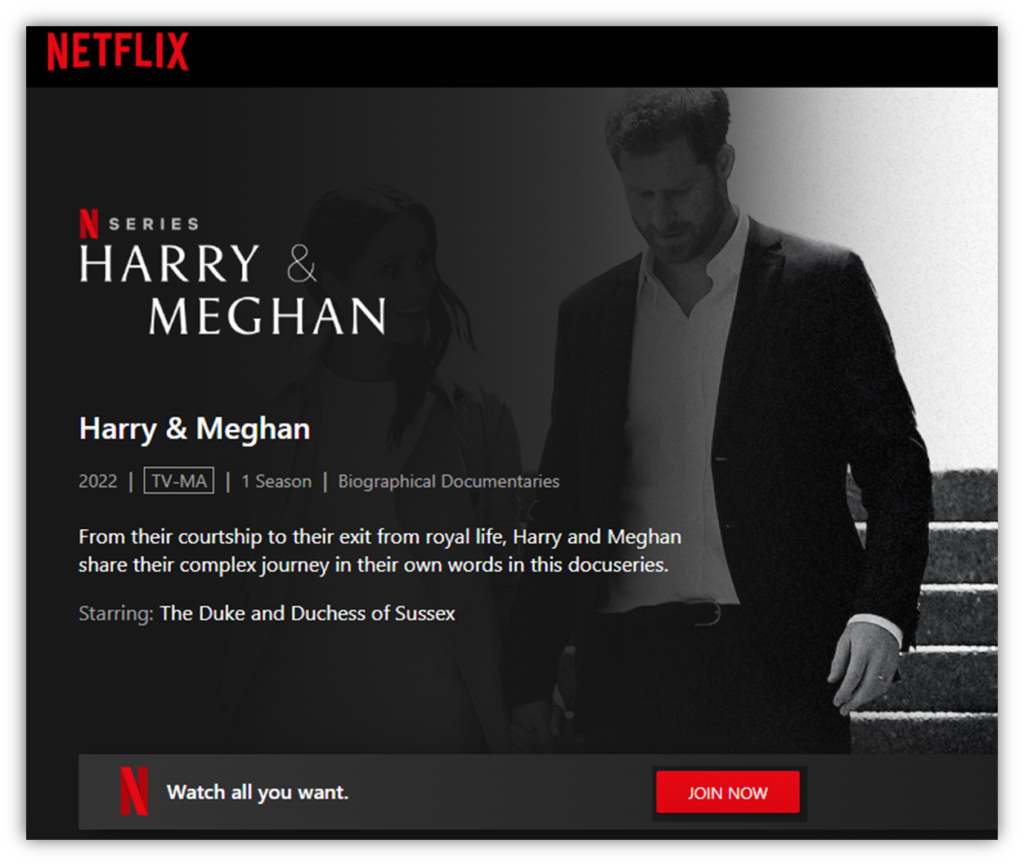
Its all in the sensational new docuseries, Harry & Meghan!
Exclusively on Netflix! Join Now!
(Sorry. We caved on our ‘gratuitous product placement’ policy. It’s been a tight month.)
The Sex Pistols and their manager Malcolm McLaren knew how to create sensations.
On December 1, 1976, Queen was scheduled for an interview on a tea time show on Thames Television. However, Freddy Mercury hadn’t been to a dentist in 15 years and suddenly had a toothache so painful, he had no choice but to get professional help. At the last minute, Queen canceled the TV interview.
And was replaced by The Sex Pistols.
The band let the interviewer goad them into the bad behavior he expected of them, and their use of naughty words on afternoon television was splashed all over the newspapers the next day.

“The Filth and the Fury!” screamed the Daily Mirror.
If you believe that all publicity is good publicity, as the Pistols and McLaren did, it was perfect.
This little underground band was suddenly known nationwide, and beyond.
The brouhaha continued in the UK for well over a month, as the tabloids knew filthy and furious headlines sell papers, and McLaren knew they sold records. The press and the Pistols used each other in an unspoken arrangement.
Reporters said the Pistols spit and vomited in the KLM departure lounge on their way to a tour of the Netherlands.
In reality, they were running late and a record label representative got them directly to the plane on the tarmac. They didn’t go through the terminal at all.
Now, did the newspapers just invent the vomiting story, or did Malcolm MacLaren plant it? We may never know.
The result is that the general public, who didn’t know a thing about punk rock a month prior, now understood punk musicians to be vile, anti-social, miscreants.
Whether that made individual members of the public want to ban punk or start a band, it fixed the Pistols’ sound as what punk bands sound like.
Granted, it’s a great sound, like Chuck Berry songs played faster and with more distortion.

A good little jump number.
These guys remind me of myself when I first started, I only knew three chords, too.
CHUCK BERRY, 1980, ON THE RAMONES’ Sheena is a Punk Rocker”
But there were other great sounds around and the bands making those sounds didn’t want to be associated with punk. Something had to give.
Once again, McLaren was involved. Melody Maker writer Caroline Coon quoted his use of the phrase “new wave” to differentiate the abrasive punk bands from the more melodic bands of the movement. He may have heard the term from Lester Bangs.
Loud, fast and aggressive bands like The Ramones, Sex Pistols, and Clash were punk. Bands influenced by the pop music of the 50s and 60s like Blondie, Joe Jackson, and XTC were new wave. Problem solved.
Of course, there was crossover. The Ramones were, at heart, a bubblegum pop band.
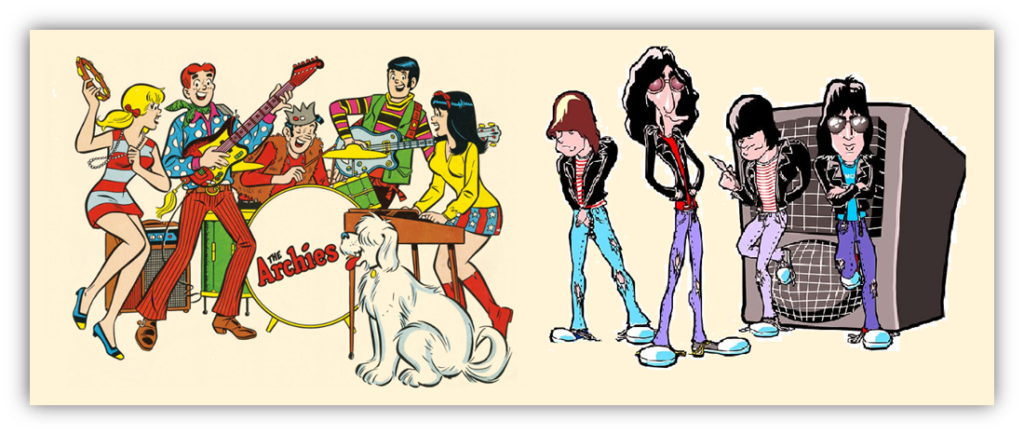
Jughead, in particular, definitely wanted to be sedated.
McLaren managed both punk and new wave bands. In addition to the Sex Pistols, he handled Bow Wow Wow and Adam & The Ants, and also helped The Slits and Jimmy The Hoover. He even released his own records. Where there was money and fame to be had, McLaren was there.
When punk’s initial shock wore off, it was overshadowed by its sibling, new wave.
Some of the new wave bands became very popular once they distanced themselves from punk and I’ll do a separate article about them. Let’s stick to punk for today.
Punk’s aggressive style, with its power chords and shouty vocals, was taken up by many other bands, particularly in the UK. British punk rock was not just a rebellion against the kingdom’s poor economy and society’s failure to care for its most vulnerable, it was a reaction to the overblown and pretentious prog rock and stadium stardom that couldn’t be achieved by mere mortals.
Punk was a public service announcement, with guitars.

There were punk love songs, too, though they were usually about love gone wrong, or not having love at all.
The Clash were the biggest post-Pistols punk band, often billed as “the only band that matters,” and they did both political and love songs.
Their two highest charting singles were London Calling, a protest song, and Should I Stay Or Should I Go?, a love-on-the-rocks song.
Even with somewhat varied lyrical topics, the guitars-with-shouting formula got boring after a while. At the end of the 70s and continuing through the 80s, bands began combining punk with other genres. There was folk punk and dance punk and cow punk. Punk jazz and punk metal and punk blues. Pop punk and peace punk and glam punk.
And then came the -cores.
Hardcore and metalcore and thrashcore and grindcore and queercore and nardcore.
Tweak your sound, pick a noun, add “core,” and you’ve got yourself a new subgenre.

Hardcore was the first of the -cores. It was a mostly American phenomenon and the starting point for all the other -cores. Bands like The Ramones used the ethic that loud fast rules. Hardcore bands wanted to be even louder and faster. When you play that fast, there’s no time for subtlety. It’s just “1 2 3 4 bang bang bang bang bang bang bang bang. Bang. Thanks. And for our next song….”
Songs played at 240 bpm are going to be short. What would be a three minute song at a normal tempo became a ninety second song.
The sweat drenched frenzy in the mosh pit wasn’t sustainable for terribly long, so many songs were deliberately written to be shorter so the dancers wouldn’t exhaust themselves before a song ended. It’s a bit of a novelty but a song called Count by Arizona band JFA is only five seconds long.
There’s not much time or need for a melody, either. If you only have a half octave vocal range, you can be a hardcore singer. Of course, “singer” might be the wrong word. You can be a hardcore vocalist.

Can you scream in time? Can you push stage divers away if they get too close to the equipment? Have you got a van? Yeah?
You’ve passed the audition.
Among these hardcore bands and fans, some decided to go straight edge. This idea started in Washington DC, with Minor Threat vocalist Ian MacKay as its somewhat unwilling spokesperson. While punk philosophy is about thinking and doing for yourself, rejecting normal societal roles, and questioning authority, straight edge added personal restraint. That meant no drinking, doing drugs or having sex.
It was a mix of liberal individualism and conservative morality.
Hardcore bands could also be really young. You need that angsty teenage energy to play that fast, and 21-and-up nightclubs wouldn’t book you anyway. Hardcore isn’t music that helps sell drinks, especially if half the audience was straight edge.

Instead, in the DIY spirit, bands would rent a VFW hall or Moose lodge and invite a couple other bands to play. They’d charge a few dollars at the door.
If enough kids showed up, the bands would make their money back. These shows were all ages.
The result was regional scenes, each with their own sound and vitality.
St. Louis bands sounded different from Oklahoma City bands. Even scenes that were near each other had their own flavor.
When I was in a hardcore band in Boston, I noticed that the bands in the western Massachusetts scene had a different vibe. Just two hours up the Mass Pike, they were more likely to have a sense of humor. The Freeze, who were considered part of the Boston scene, had a sense of humor, too, but they were actually from Cape Cod.

Each scene had its own fanzine. The ‘zines had band interviews, record and show reviews, and lists of upcoming shows.
Some had comics. Most had badly reproduced photographs.
Fanzines were very low budget, sometimes handwritten, sometimes typed. Some were Xeroxed, some were mimeographed. ‘Zine editors used whatever equipment they had access to.
One of punk’s main ideas is DIY.
If you can’t find a singer for your band, do it yourself. If you can’t afford guitar lessons, teach yourself. If no label wants to put out your band’s record, start your own label. If no magazine covers the bands you love, start your own ‘zine. Like abstract art, it’s not about the result, it’s about the doing.
Even with all these individual scenes, some bands rose to national and international prominence.

Some of the bigger names in the American hardcore scene include Black Flag from Southern California, the Dead Kennedys from Northern California, Minor Threat and Bad Brains from Washington DC, and The Misfits from New Jersey.
Some won their relative success through relentless touring, but it was the kind of touring where the band did everything. There were no roadies or bus drivers. Everyone piled into a van and took turns driving. (I bought a 1963 Dodge Town Wagon for $500 from an exterminator, so my band’s touring vehicle was a white panel truck that said “Bugman” on the side.)

And we’re not being ironic.
With any luck, the local band in each town had spare beds and showers for the touring band. Otherwise, they slept in the vans. Punk bands who spent any time doing this kind of touring are very familiar with the term “van stench.”
Hardcore and its variations are strictly underground subgenres. One might have thought that music protesting Reaganism and Thatcherism could have been more popular, but protesting in a genre so difficult to listen to isn’t really an effective instrument for change.
This is especially true given hardcore’s tendency to write lyrics saying the exact opposite of the writers’ intent.

When Fear sang Let’s Have A War or the Dead Kennedys suggested a Holiday In Cambodia, they didn’t mean it. They were trying to point out how asinine warmongers are.
Not everyone caught on to the sarcasm.
Hardcore was nowhere to be heard in the mainstream through the 1980s. Still, it was influential enough that metal musicians added its fast tempos to their songs to create the speed metal subgenre. Early Metallica and Slayer are great examples. Both bands would have long successful careers.
Despite early punk’s initial reluctance to seek stardom in and of itself, the early 90s brought blockbuster success to punk bands like Green Day and The Offspring. Their success can be seen as a response to the excesses of glam metal.

It was like the record buying public was saying it was time to get back to basics again.
These young bands put the pop melodies back into the punk energy at a time when people needed it.
I’ll cover punk’s influence on grunge in a future article, and it may be a little obvious already.
The hardcore underground still exists with many bands together forty years later, day jobs and all. Their kids have started bands and their grandkids are thinking about it. You can hear hardcore’s influence on current bands like Turnstile and Iron Lung.
However, I’ll go further and suggest that punk has influenced such diverse genres as Americana and electronic dance music.

And any other music you can record in your bedroom.
Advances in technology and the proper attitude make it possible to truly do-it- yourself.
The do-it-yourself mindset is punk, whether it’s a band writing songs in a garage, or a couple of guys developing a personal computer in a garage.
It’s dogged individualism with the purpose of creating something new.
tnocs.com contributing author bill bois
The Sex Pistols famously imploded during their American tour, playing their last show in January 1978.
Some say punk died with them.
If so, the memorial service has lasted for 45 years now. Punk has never gone away.
The crux of punk is this:
- Everyone has something to say.
- Anyone can be in a band.
- You can do it.
- So:
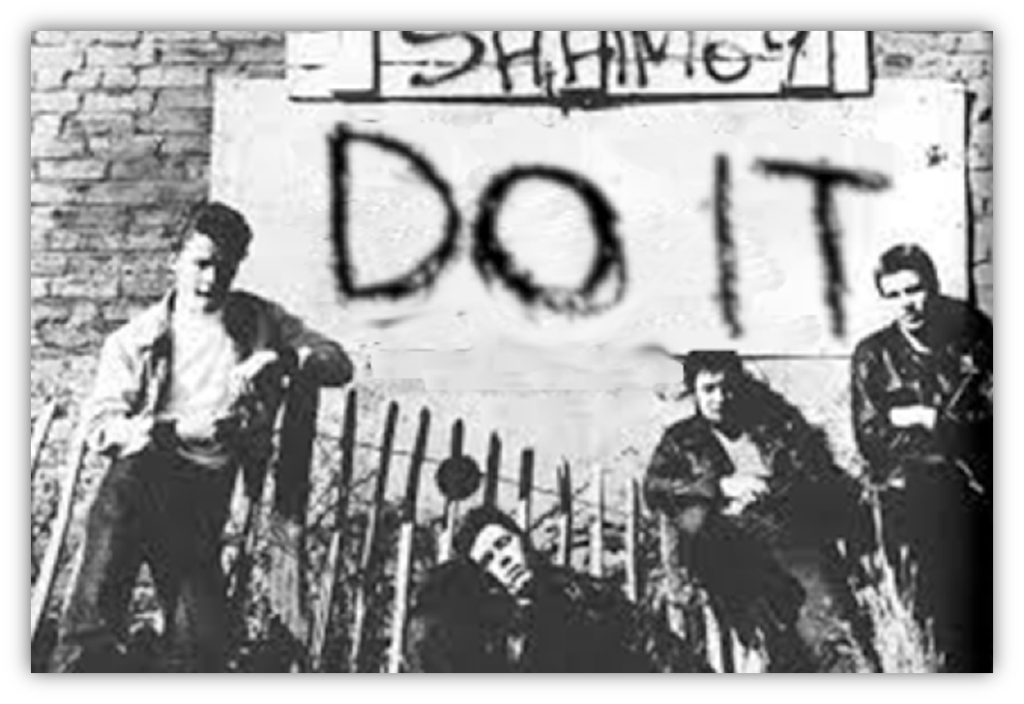
Suggested Listening
(Full Playlist Link)

God Save The Queen
Sex Pistols
1977

There’s Gonna Be A Borstal Break-Out
Sham 69
1978

Holiday In Cambodia
Dead Kennedys
1980

Pay To Cum
Bad Brains
1980

Rise Above
Black Flag
1981

Straight Edge
Minor Threat
1981

Count
JFA
1981

Know Your Rights
The Clash
1982

Let’s Have A War
Fear
1982

Idiots At Happy Hour
The Freeze
1982

Never Again
Discharge
1982

Sick Boy
GBH
1982

Lights Out
Angry Samoans
1982

Coup d’Etat
Circle Jerks
1983

Real World
Hüsker Dü
1983

Kids Are For Trix
Psycho
1983

Lou’s Anxiety Song
Deep Wound
1983

Die Die My Darling
The Misfits
1984

Sold Out
Gang Green
1984

Holiday
Turnstile
2021

Mental Distancing
Iron Lung
2022
(Let the author know that your liked their article with a “Heart Upvote!”)




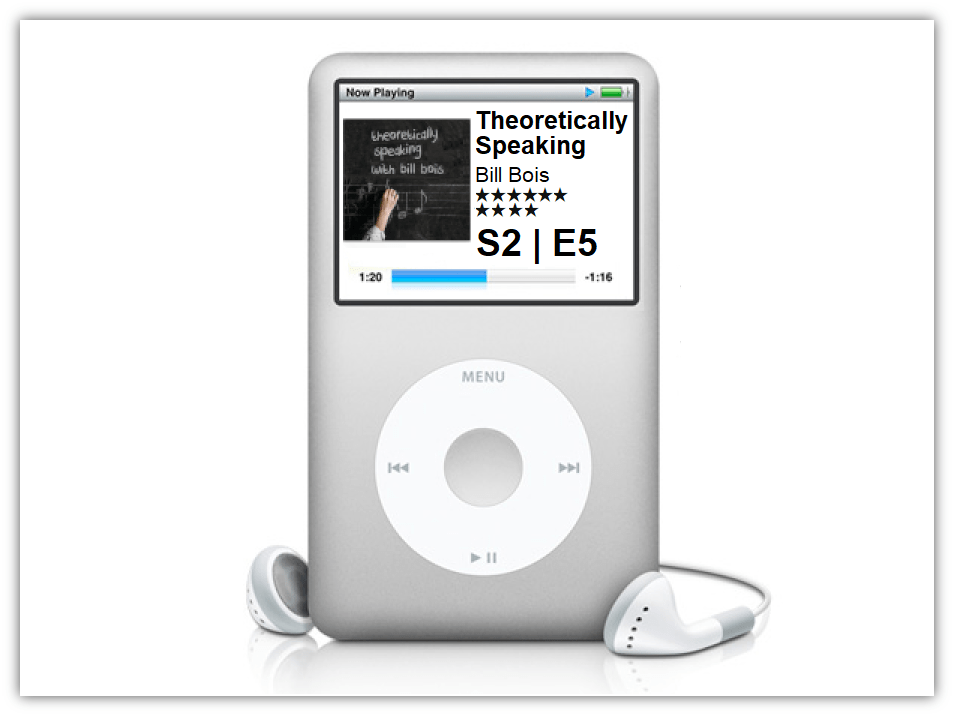
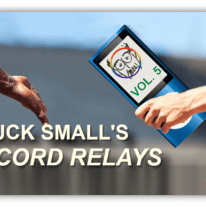
Thanks, Bill! Learned a lot, as always! It sounds like, given the brevity of the songs, a 15-song set for a punk band could easily come in at under an hour.
I think I read that The Ramones did 15 songs in 20 minutes. When I saw them, they played for 45 minutes and I lost count of how many songs they did. It was a lot.
Nice. The point at which punk exploded into a thousand different things.
While I know a good deal of the selections listed here, there’s a bunch I never heard of, and that makes sense.
Of those I didn’t know, I love the Discharge and Psycho tracks. And I’m just learning that Lou Barlow and J Mascis had a hardcore band before Dinosaur Jr. I guess I just outed myself as a rather casual DJr fan!
That track is great though. Like Negative Approach and The Germs smashed and compacted into a mini bomb.
I do love the no-frills rush of DC and NYC hardcore, but ultimately my penchant for weirdos wins out. More often than not, I gravitate toward Angry Samoans, Dead Kennedys, Meat Puppets, Minutemen, Feederz, Reagan Youth, Wipers, Wire, Descendents, Misfits, Redd Kross, and early Black Flag, w/ Keith Morris. And Bad Brains, who get plenty of credit for their role in the spread of hardcore, but don’t get credit for being a truly weird band.
The Deep Wound EP was recorded at Radiobeat in Boston. My band recorded there shortly after them and the engineer said, “You gotta hear this.” As soon as I heard the first song, I knew our record wasn’t going to measure up. It’s astounding.
I love most of the bands you list and will recommend two compilation albums. “This Is Boston Not LA” is what it says on the tin, nothing but Boston hardcore bands and great from start to finish. It’s very hard to find physical copies of “Let Them Eat Jellybeans” because of a dispute between Alternative Tentacles and Black Flag, but I’m sure someone has playlisted it.
I never heard either compilation, though I have heard a lot of the songs listed on Jellybeans (haven’t heard “Slave to My Dick” in a bit though!). Great stuff.
I’ll give the Boston comp a go. Thanks for the recommendation!
One band that I constantly heard about but never listened to until somewhat recently is Stiff Little Fingers. Man, that first album hits you in the gut!
https://www.youtube.com/watch?v=on6DxBgfsDY
Hell yeah! Best Northern Ireland band ever!!!
The Undertones would like a word…..
…followed by That Petrol Emotion.
One of Stiff Little Fingers’ classics, “Alternative Ulster,” originated as the theme song of a ‘zine.
https://youtu.be/PlGmYetiCjA
Man, your love for this genre really comes thru in this piece. Thanks!
There’s a few bands I regret not getting a chance to see. The first is The Dead with Jerry, even though I’m not into that scene at all.
The other is (are?) The Ramones. Two of my close friends went to a number of their shows, and one told me (if I remember verbatim…), “You think their songs on vinyl are quick? Speed them up by 3, and that’s what you’ll get at a Ramones show!”
There’s not enough footage of how great The Ramones were live.
> Man, your love for this genre really comes thru in this piece.
I can become emotional at a car wash opening. FBOW, it’s just how I’m wired.
So you can imagine where my head was at while I was doing the layout for this article.
Loud, fast, rule breaking music – and all of it: honest, true, and straight from the heart? Yep. Just like all great works of art.
It was an honor to publish this two-parter. Take a victory lap, V-dog.
Lookee here! We complimented each other within the same 60 seconds. I’m gonna get all verklempt.
By the way, can we take a second to appreciate mt58’s albacore joke? With that, the Archies/Ramones comic, and the pretzel bit, he turned this into comedy gold.
I laughed out loud at the Archies / Ramones intersection. The man is a genius!
mt has a new fan
…
I knew whatever joke I was missing there must be hilarious, but it took your explanation. I must be slow today…
That Archies/Ramones illustration reminds me of my headcanon that They Might Be Giants’ “We’re the Replacements” is the theme song to a Replacements Saturday Morning Cartoon from an alternate universe where such a thing was not just posssible, but inevitable.
https://youtu.be/WQDD-6l2kkQ
A shameless plug for V-dog’s amazing article over at SG would be a thing, if anyone is of a mind.
TIA.
Phylum is way ahead of you. 😎
As always. Atta principal taxonomic category. ❤
I don’t require an Order.
Ba-dum-tsssss!!!
But you do have Class…
One of my daughter’s college friends began identifying as a “punk.” She claimed to love all things punk…music, attitude, etc. My daughter, having been raised correctly, mentioned The Ramones and The Sex Pistols to her, only to be met with a blank look. My daughter’s punk list on Pandora (that was still a thing) was immediately renamed “Corinne is a poser.”
Have your daughter recommend this song to her friend:
https://www.youtube.com/watch?v=4CYrJ1POzns
Was not expecting a Jimmy The Hoover reference.
Mention of the fanzines and the closing crux of the message of punk to ‘do it’ reminds of this from the Sideburn fanzine in the 70s which is quoted a lot in UK punk as inspiration for others to form bands (there’s a lot of conjecture that it’s from the much better known Sniffing Glue fanzine but the internet reckons it was Sideburn – I’m too young, I wasn’t around).
On the subject of inspiration, the Sex Pistols weren’t the first punk band to release a record (The Damned: New Rose) and they had a lot of difficulties playing live as many venues banned them once their reputation took hold but as an example of inspiring the next generation. Their two gigs at Manchester Lesser Free Trade Hall in the summer of 1976 were sparsely attended (about 40 people at the first) but those people included Howard Devoto and Pete Shelley who organised them and were about to become Buzzcocks, Tony Wilson who launched Factory Records, Bernard Sumner, Peter Hook, Ian Curtis, Paul Morley who became a journalist for NME then founded the ZTT label and Art of Noise, Morrisey, Mark E.Smith and not forgetting Mick Hucknall.
The Sex Pistols may have burnt out quickly and Malcolm McLaren had questionable methods of promotion but they created a chain to be picked up by plenty more.
I’ve always like that graphic. It explains everything.
cappie the dog will kill me but I’ve never seen “24 Hour Party People” which dramatizes the Manchester scene and includes actual footage from that first Sex Pistols show.
Watch it this weekend…
thegue is right. What’s cool about the scene is that you see Martin Hannett(Andy Serkis) get up from his folding chair and starts “dancing”. The greatness of The Sex Pistols is evident in Hannett’s enthusiasm. Serkis communicates to the audience that Hannett was no dancing fool who stood up for just anybody.
Joy Division and New Order should have been nominated separately. Either/or, about time. Has there been a motion picture about The Cure or Depeche Mode? Joy Division was depicted twice! The other film is Control.
I’m so mild mannered that this chaotic stuff is…not my favorite. I can handle loud and fast if I’m in the mood, and what little Ramones that I’ve heard comes across as more fun. When punk goes full-on angry or shock-value (some of those songs contain naughty words), that’s when I can appreciate the passion, but not the product, and I turn on Vince Guaraldi.
There are a good deal of punk bands with poppier leanings, and even some without rude content. Finding them is another thing though.
Billy Idol’s old band Generation X got flack from the hardest of the punks, but they made some great catchy punk music. I recommend giving their stuff a try; you might be pleasantly surprised!
https://www.youtube.com/watch?v=AoQl4sP-_7k
I wonder how much of that flack was applied retroactively after Idol’s MTV success.
A good deal, but certainly not all.
Since you mentioned Gen X….
I saw Billy Idol in concert a couple years ago. (We may be boonies, but we have a big casino! Takes me longer to walk from the car to the concert venue than it does to drive there from home)
Anyhoo, one of the songs he did was “One Hundred Punks.” There were 2 guys a few rows up from me in their late 50s, they’d been jamming pretty mildly up until that point, as us older folks tend to do. Billy launches into that song though, and these 2 lose their damn minds. They start hanging on each other like 10 year old girls, screaming away, chest bumping, head banging, fist bumping, taking a swig of beer then screaming in each other’s face.
It was the most beautiful thing to watch these 2 suddenly find their inner teenage punk selves for a few moments. I loved it. 😊
I do too.
“Stop laughing! This is cool!”
That’s me babysitting. That’s me reprimanding my neighbor’s daughter who was watching “Dancing with Myself” for the first time.
A lot of first generation music videos is just great time capsule stuff, nostalgia. Only a few, and this includes “Dancing with Myself”(and I like “New Moon on Monday”, LeBon’s Bowie song) transcend this distinction.
She liked “Our Lips Are Sealed”.
I didn’t know Billy Idol recorded an early version of “Hot in the City” with Generation X.
When I was in high school, I decided I would do acid. I anticipated that I would be listening to crazy psychedelic stuff like Siouxsie’s “Dazzle” or The Glove’s “Relax.” But in fact, what I ended up playing over and over my first time tripping was Gen X’s “Dancing With Myself.”
Something that I learned and don’t know why I didn’t consider before…I’ve always noticed how the punk aesthetic looks home-made and slap-dash. Their cover art and posters were always handwritten or sloppily stenciled. I never really thought about the fact that that started because the bands were basically doing EVERYTHING themselves, and angry, young musicians were not likely graphic artists.
Of course, eventually…that look became a defining image for punk/punk-adjacent bands, and the sloppy look persisted.
Exactly right. If you were lucky, you might have a friend who would design an album cover, but flyers and whatnot were just done by whoever had scissors, tape, and a magazine they could cut up.
Here’s a question for the collective:
*When did “underground” magazines go the way of the dodo?
When I was a teacher in 1994, some students organized a GREAT underground fanzine with honest critiques of school, teachers, students, etc. They used to come around and request donations to afford the money to make copies, but most teachers (and definitely the administration) did not know who left tens of copies in various locations around the campus, which were quickly gobbled up before the authorities could seize them.
Yet another anti-establishment thing I miss.
They were replaced with blogs and social media.
A critique I have of punk is that the aesthetics never changed. Or at least you have teenage punks in every era since 1976 trying to copy the styles (or anti-styles) of that time. You can still see kids wearing jackets with safety pins and spiked mohawks, which is a bit like kids in the ’70s wearing Zoot Suits or dressing as flappers.
(That probably falls about 98% on McLaren’s head. He was just too good at iconography.)
Jughead, in particular, definitely wanted to be sedated.
And I firmly believe that Archie is a teenage lobotomy.
Imagine Jughead and Shaggy in some sort of Bill and Ted ripoff. In this version, only those two guys can hear Scooby Doo talking.
So there were a few Misfits and Dead Kennedys shirts prominently worn around HS back in the late 80s, mixed in with all the glam metal t-shirts roaming school. I honestly always associated them with the goth crowd, I never even thought to consider them as punk. Unless Goth is an offshoot of punk as well? Which would make a lot of sense. I mean, honestly, America was born of offshoots – Group B doesn’t like how Group A is doing things. So they go off and form their new community. But then eventually folks get restless in Group B and don’t like their religious interpretation. And they move further west to become Group C. And so on, and so on.
America – One Nation of Punk Mentality.
I can’t believe y’all didn’t rename your band “Bugman”, VDog. Throw out fake bugs during shows. It’s all about the gimmick!!
Thanks for another fulfilling entry. Nom-nom-nom… 😁
Goth is definitely an offshoot of punk/new wave. It’s goddess mother is Siouxsie Sioux, and she was there from the beginning. You can see her in the clip of the TV show where the Pistols said all the naughty words.
Funny how Siouxsie & The Banshees are considered post-punk when they were around when punk was still in its infancy.
Bugman! Adding it to the list….
If it was just Siouxsie singing for three hours, I would get on a plane. She needs the Stranger Things bump. This is Kate Bush’s third nomination. I can’t believe she’s getting in because of a web series.
Bill…what makes goth “goth?”
Eyeliner.
I jest but it’s really just black clothes and minor chords and lyrics about going into depression and coming out of depression. And maybe a lot of reverb.
My ultra-reductive equation is The Doors + David Bowie + Sex Pistols = Goth.
Maybe the eyeliner is implied with David Bowie, but fishnets are another matter.
I’m late to the party, but I was just wondering earlier today if you had gotten to punk yet, because Spotify was pushing an algorithmically made punk mix on me and I found myself trying to delineate where punk stopped and, say, power pop or 90s alternative began, because there were definitely some songs I would have put in the latter categories. And I realized that not only could I not say where the division was, I couldn’t even articulate what punk was. So thanks for helping answer the far-from-urgent maunderings I had whilst driving around today!